With a Grass-Green Kitchen and Orange Bedroom Walls, This Roman Apartment Is One Artist’s Biggest Canvas
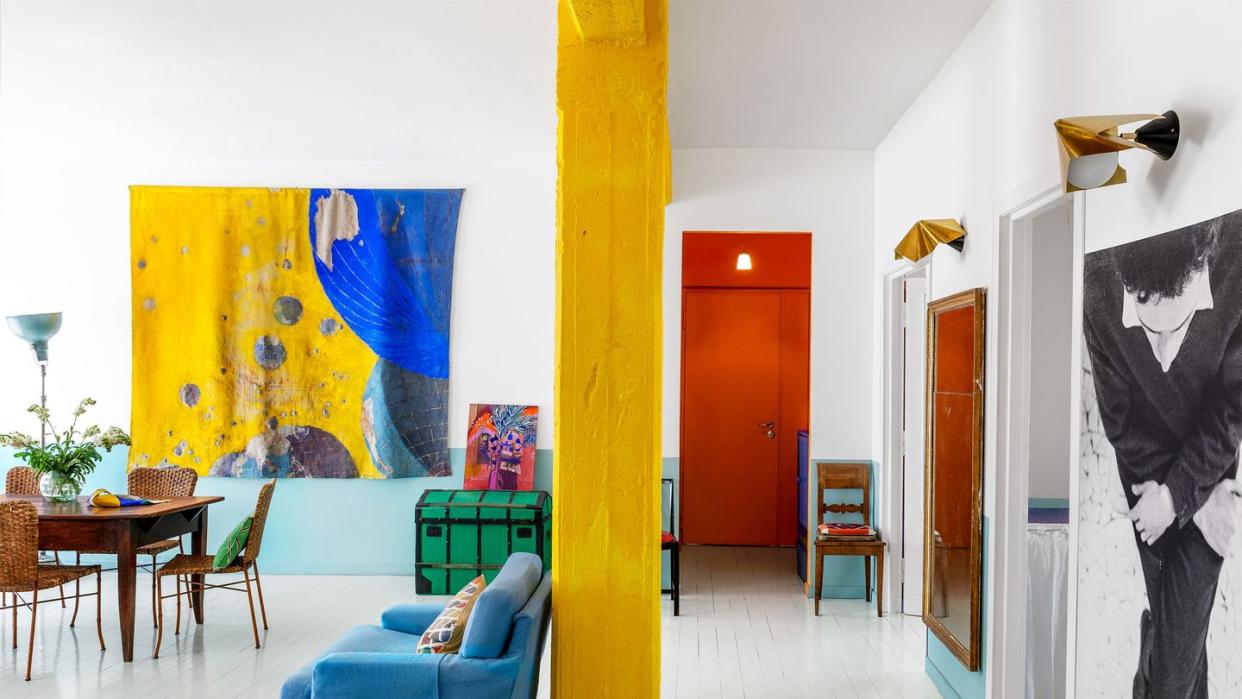
The artist Julie Polidoro deconstructs notions of identity and place in the wide variety of works she creates—from vast, unstretched canvases to collages, drawings, textiles, and sculpture. But no matter the medium, each of her pieces has a through line: a reverberating sense of space. “In art, as in life, emptiness is powerfully evocative,” she says.
Her home, an airy apartment perched like an eagle’s nest at the top of Rome’s Janiculum hill, bears testimony to her interest in positive and negative space. Furnishings here are as ethereal as the luminescent daylight, and every room is defined by the artist’s experimental use of color.
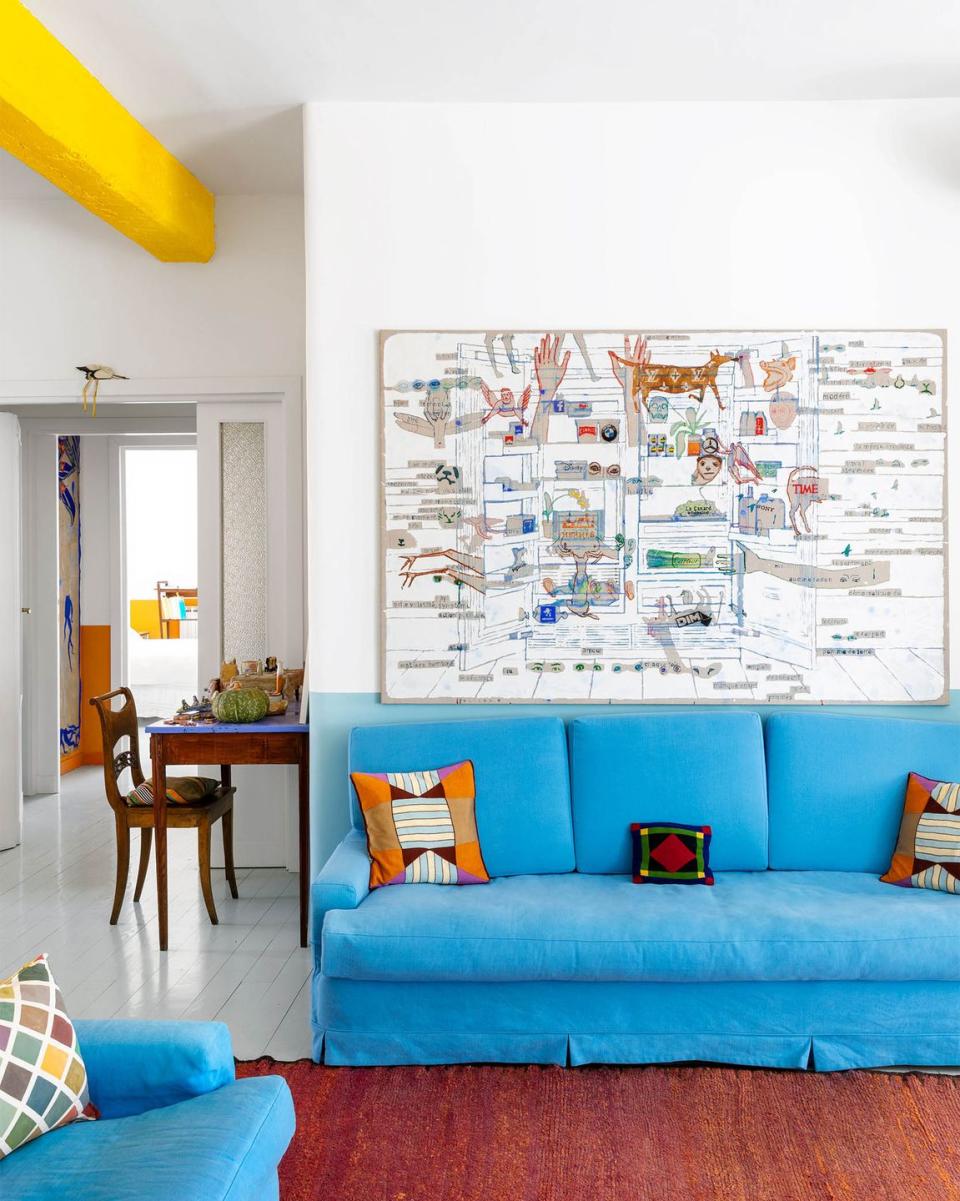
A child of the 1970s, Polidoro was born in France but for the most part grew up in Rome, her family’s home. As a young adult, she hopped from continent to continent—first for her studies, which took her to New York and Paris, then to Hong Kong, where she received a UNESCO scholarship to teach painting. Nine years ago, she and her teenage daughter, Nina, moved from Paris to Rome to be closer to family. They started out renting a flat in the picturesque area of Trastevere, where her mother lives. But just before the pandemic, craving quieter surroundings, Polidoro started searching for a new home up the hill in Monteverde Vecchio. “It took time, but it was useful because it fine-tuned what I really wanted: space and light, of course, but also a full exposure to the elements,” she says.
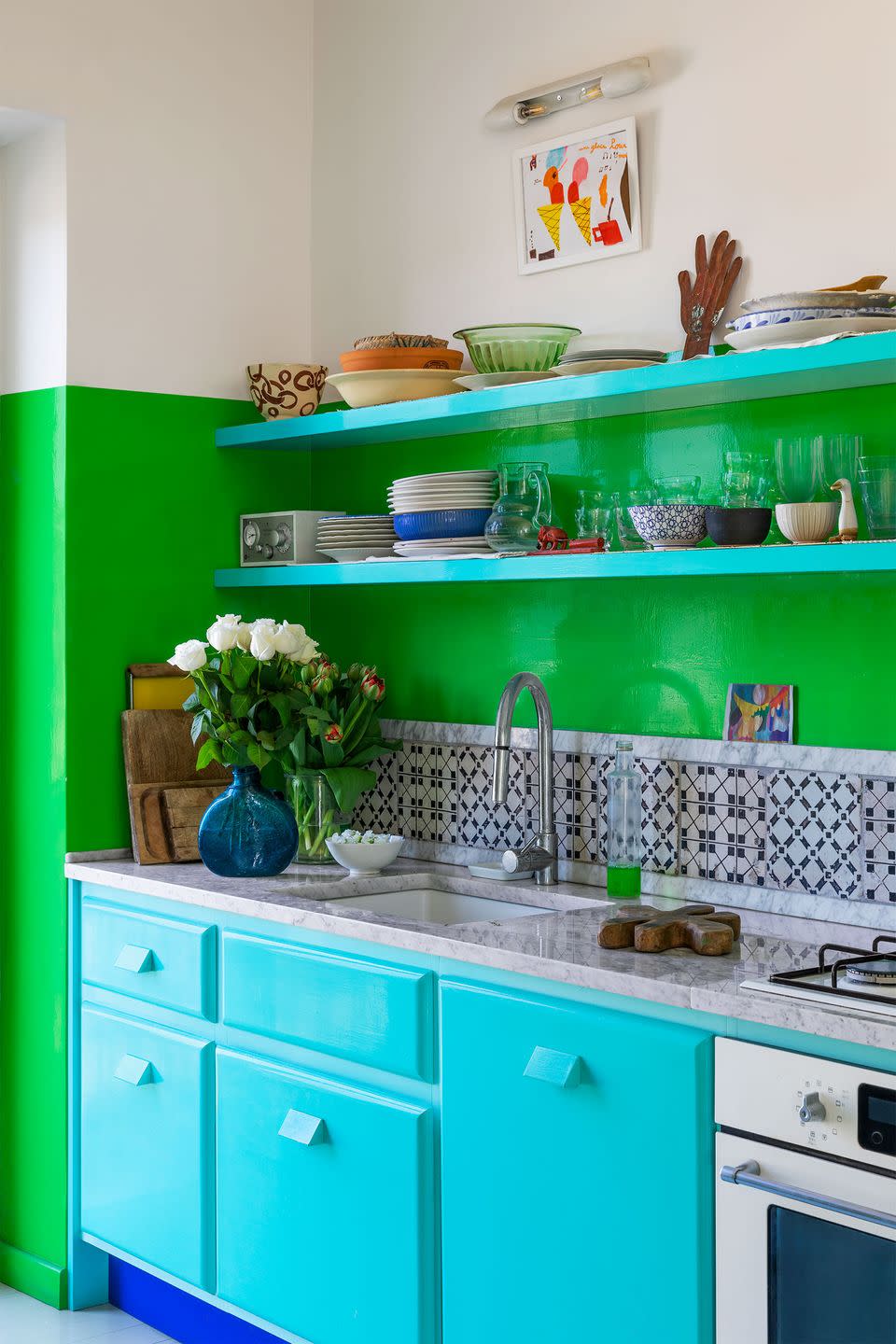
At last, she found something with potential: an apartment on the fourth floor of a 1950s building. The space was framed on three sides by large windows bounded by open skies and city views. The nearby presence of Villa Doria Pamphili, a 17th-century villa with one of Rome’s largest urban parks, clinched the deal, as Polidoro loves nature strolls. That said, the apartment needed work. The space was a midcentury time warp with shiny black marble floors and a clunky floor plan with lots of poky rooms and walls that blocked the views. “She had a clear idea of what she wanted,” says her architect, Marta Zampacorta. “Light, light, and even more light!”
Living Room
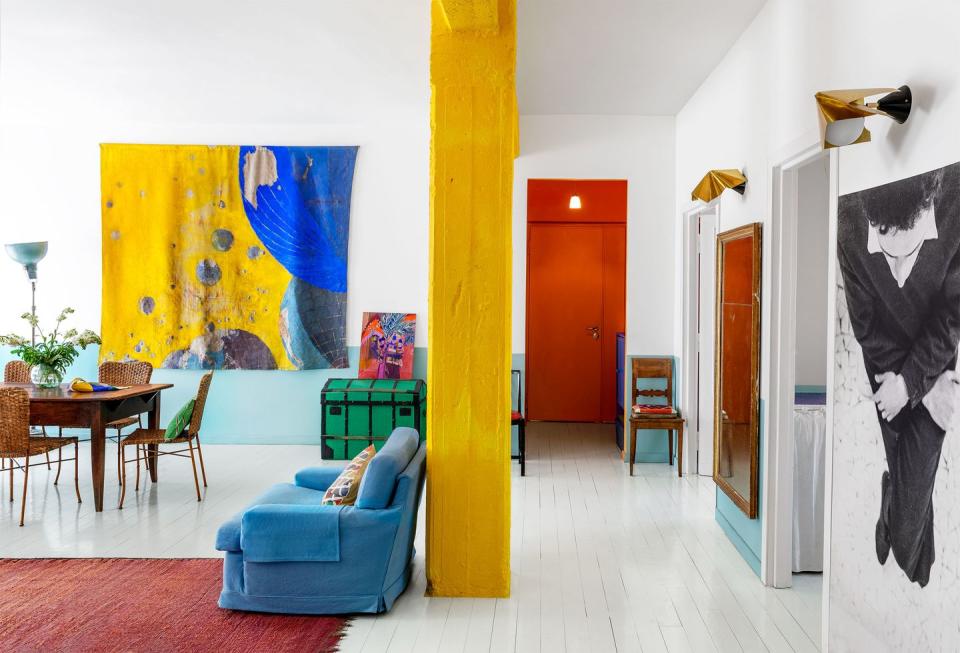
Two artworks by Julie Polidoro are displayed in the great room of her Rome apartment, which she renovated with architect Marta Zampacorta.
Living Room
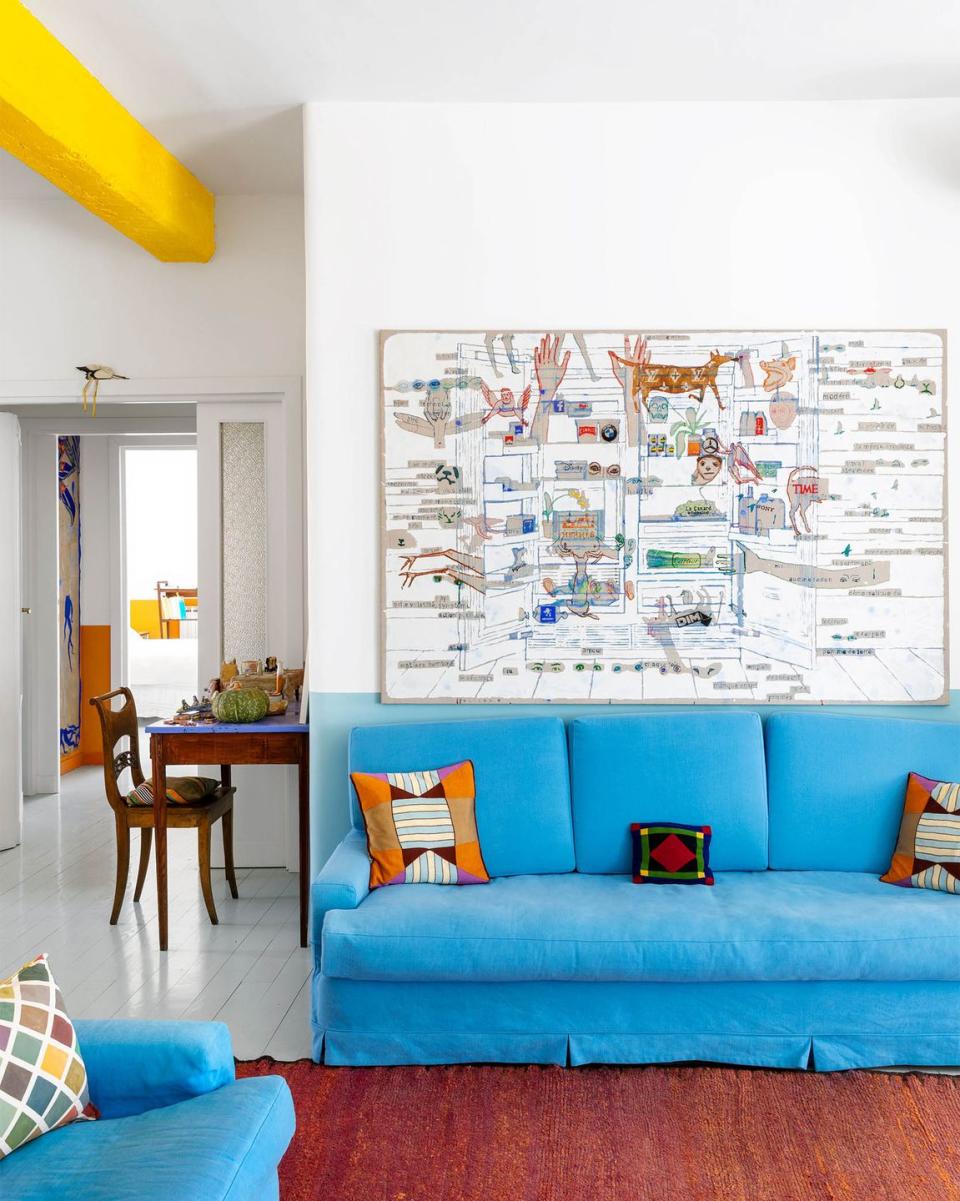
The living room’s custom sofa is topped with hand-embellished pillows by Diane De Clercq. The pillow (far left) is hand-painted by Zazielab, and the artwork is by Polidoro.
Office Space
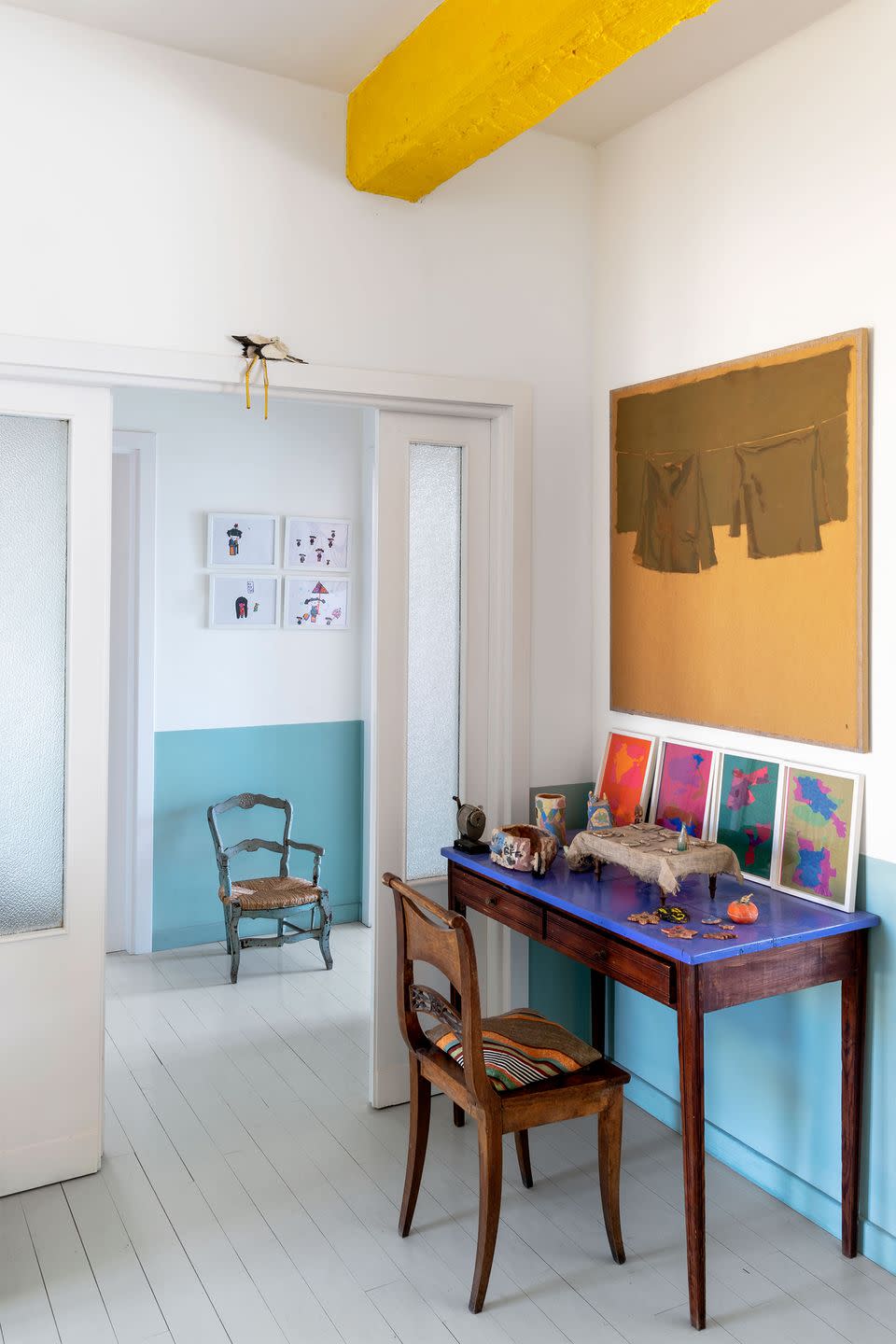
The wooden chair and desk in the corner of the living room are late 19th century, and the artworks are by Polidoro.
Kitchen
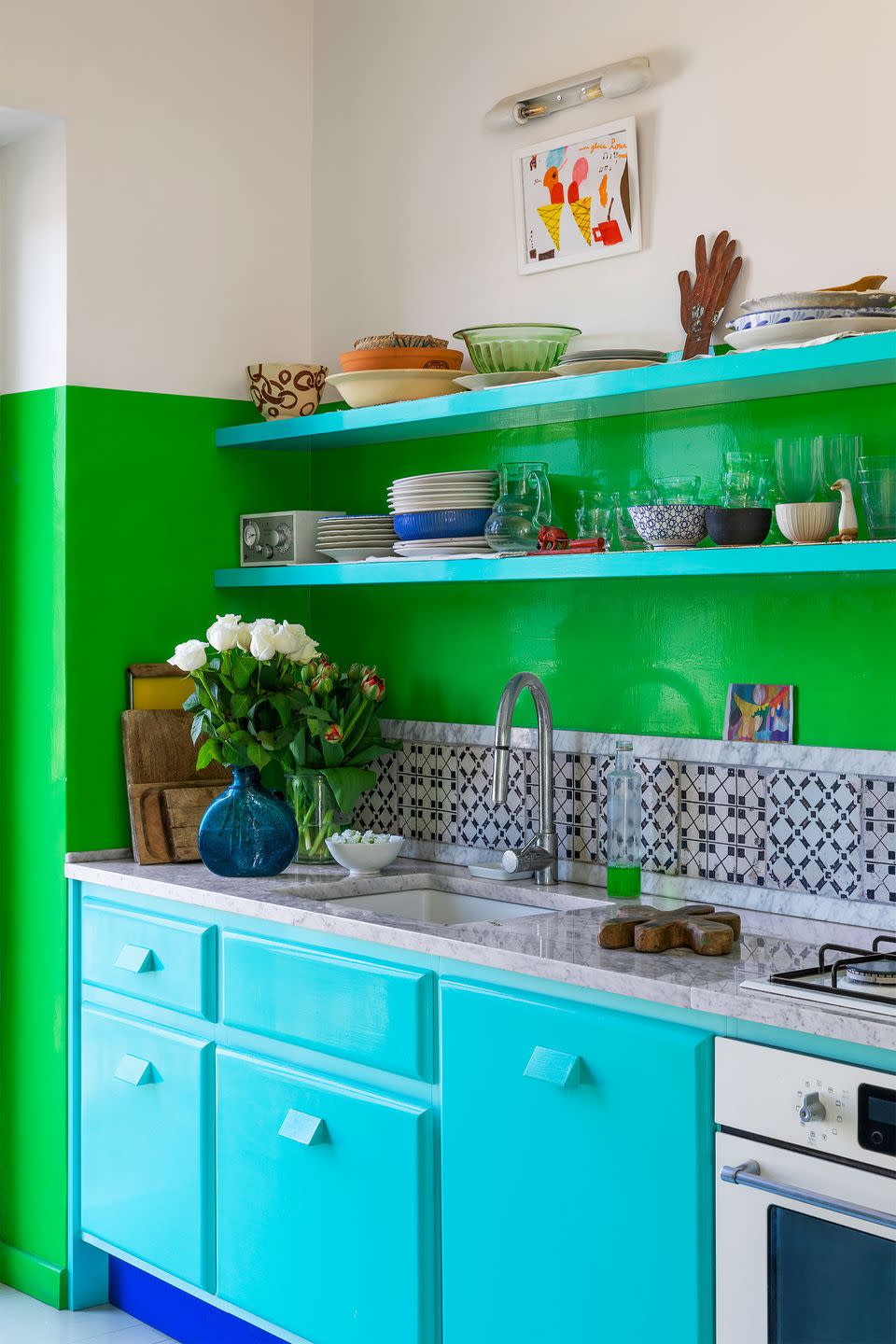
A vivid green by Crown Paints covers the lower half of the kitchen wall. The backsplash is Sicilian tile, the bowl (upper left) is by Livia Polidoro, and the artwork (top) is by Julie’s daughter, Nina.
Primary Bedroom
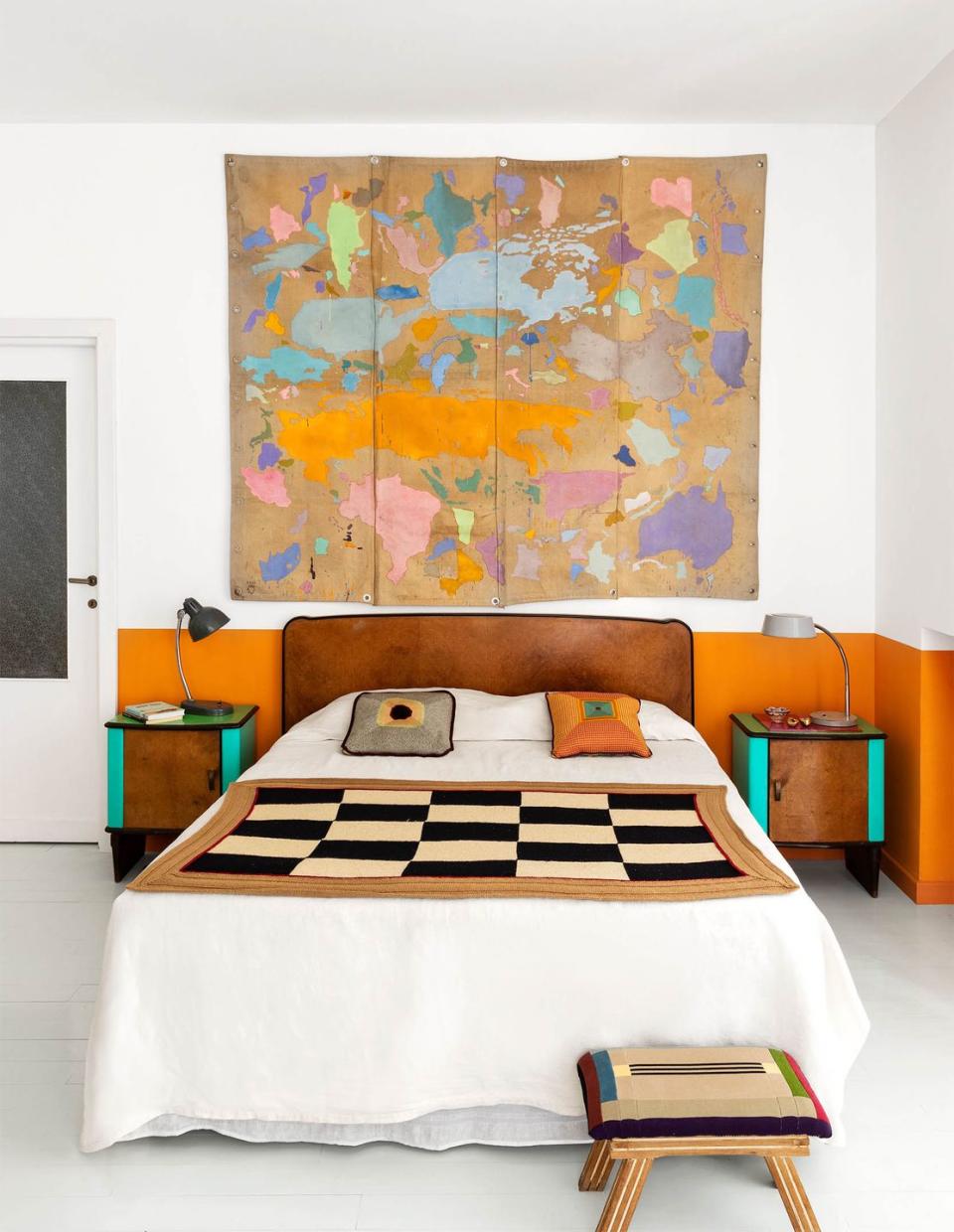
The primary bedroom’s leather headboard and nightstands are from the 1940s. The bed quilt and stool cushion are by Diane De Clercq, and the artwork is by Polidoro.
Primary Bedroom
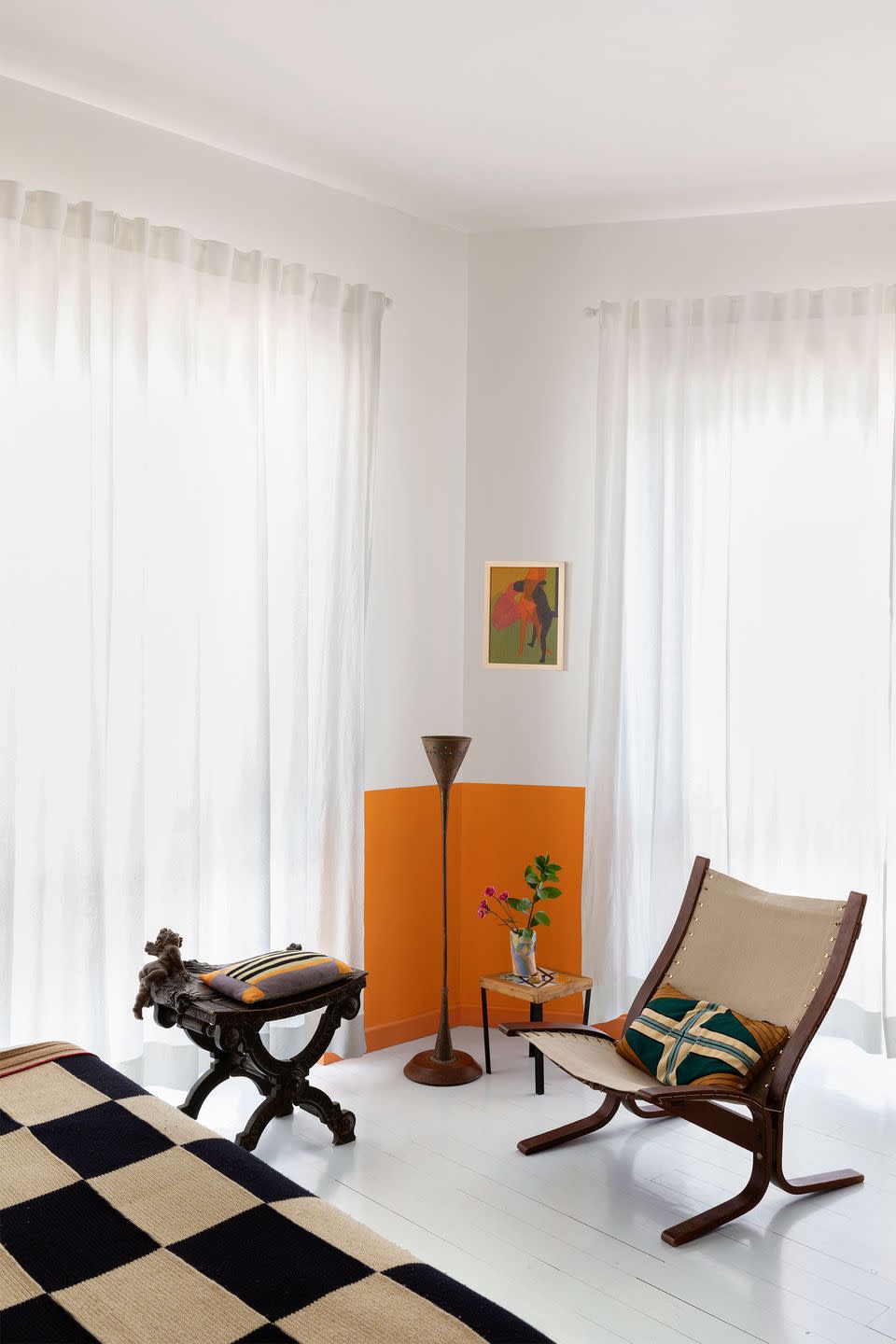
The quilt and the cushion on a 1960s chair are by Diane De Clercq. The stool is from the 19th century, the brass standing lamp from the 1920s. The artwork is by Polidoro.
Bathroom
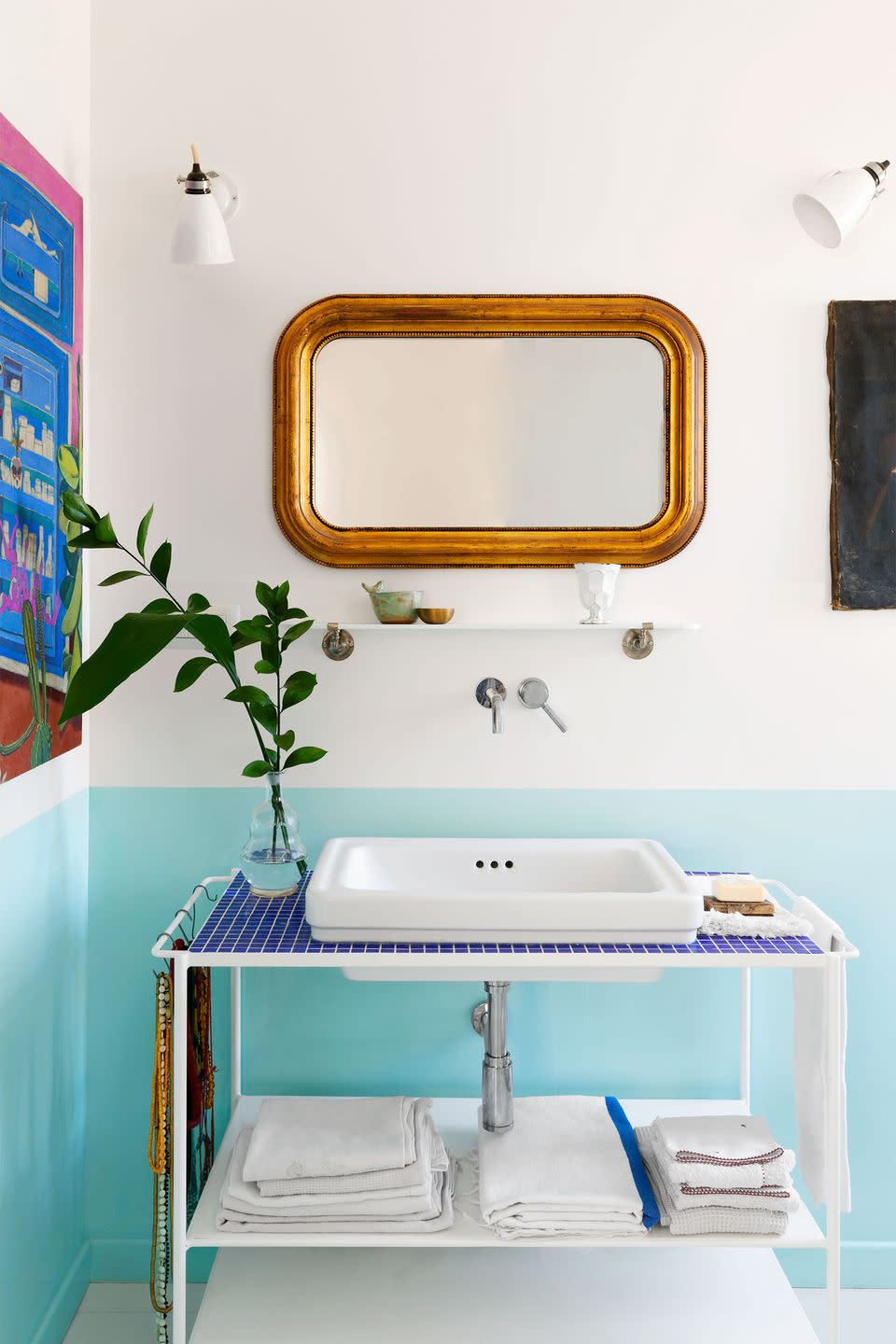
Polidoro turned an iron tray table into a vanity. The sconces are by Hector Finch, and the artwork is by Julie Polidoro.
The Artist
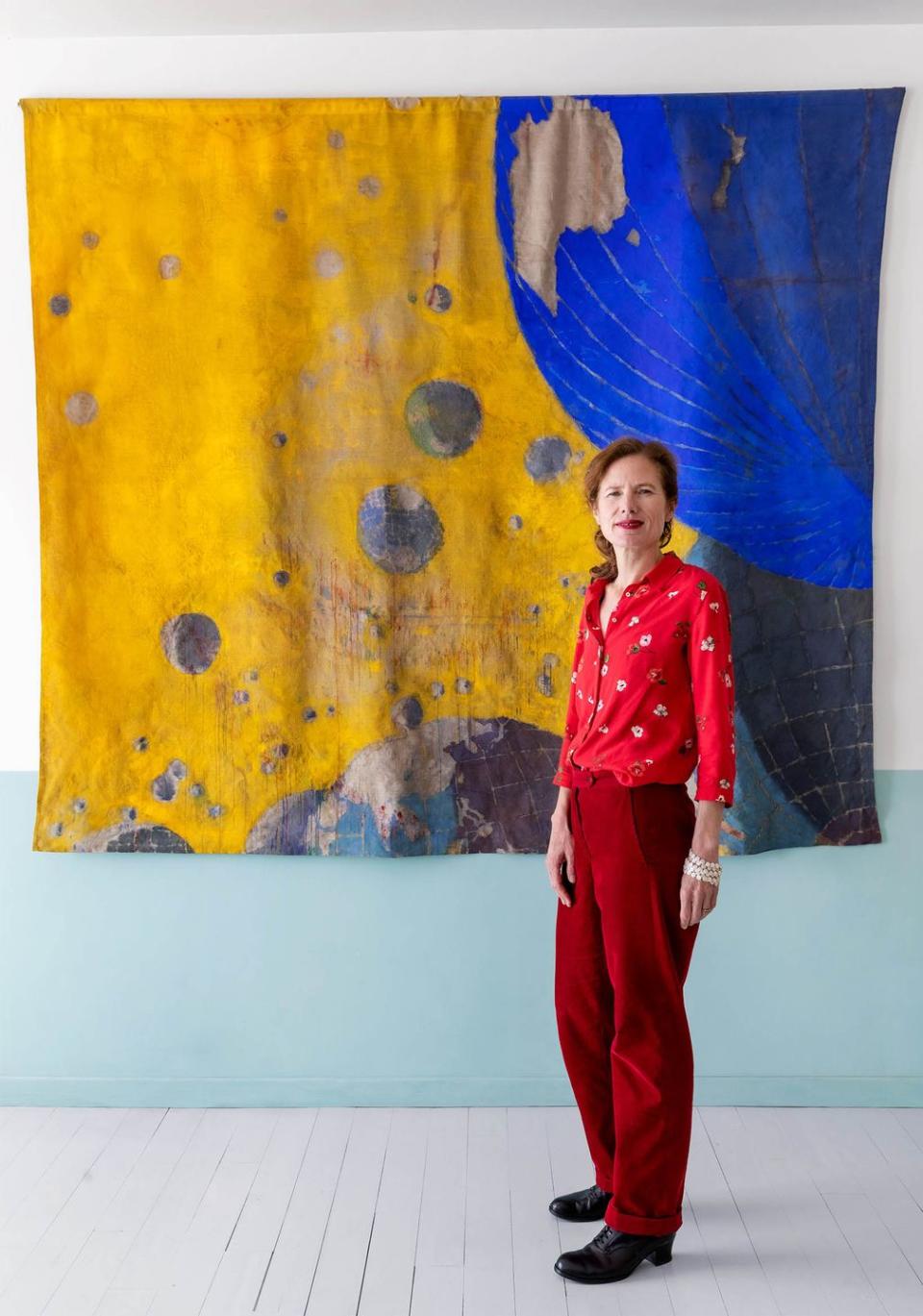
Julie Polidoro stands in front of her 2014 mixed-media artwork Suspended Worlds III.
Today, the layout consists of a great room for living and dining, a spacious eat-in kitchen, and three bedrooms. In these sunny rooms, Polidoro—who teaches about the history and perception of color at Rome’s prestigious Istituto Europeo di Design—has put her color theories to the test. She believes that specific hues and tonalities impact the mind and the mood. To that end, she drenched her entry hall in an orange so vivid it feels like a welcoming embrace. For the main room she chose a pale aqua. “In Rome, where the weather can be scorching, it’s useful to live with hues that enhance a perception of coolness,” she says.
For her bedroom she picked a warm, earthy hue, while her daughter’s room is a happy, youthful explosion of bright green. Meanwhile, for the kitchen, she “went for a grass green that reminds one, in a subliminal way, of where our food comes from.”
Polidoro’s nomadic lifestyle has left its mark in a taste for minimal furnishings. Her father, the late movie director Gian Luigi Polidoro, moved to New York when she was a child. “I would see him once a year, but that was fine,” she says. “We have a dynamic, all-female family.”
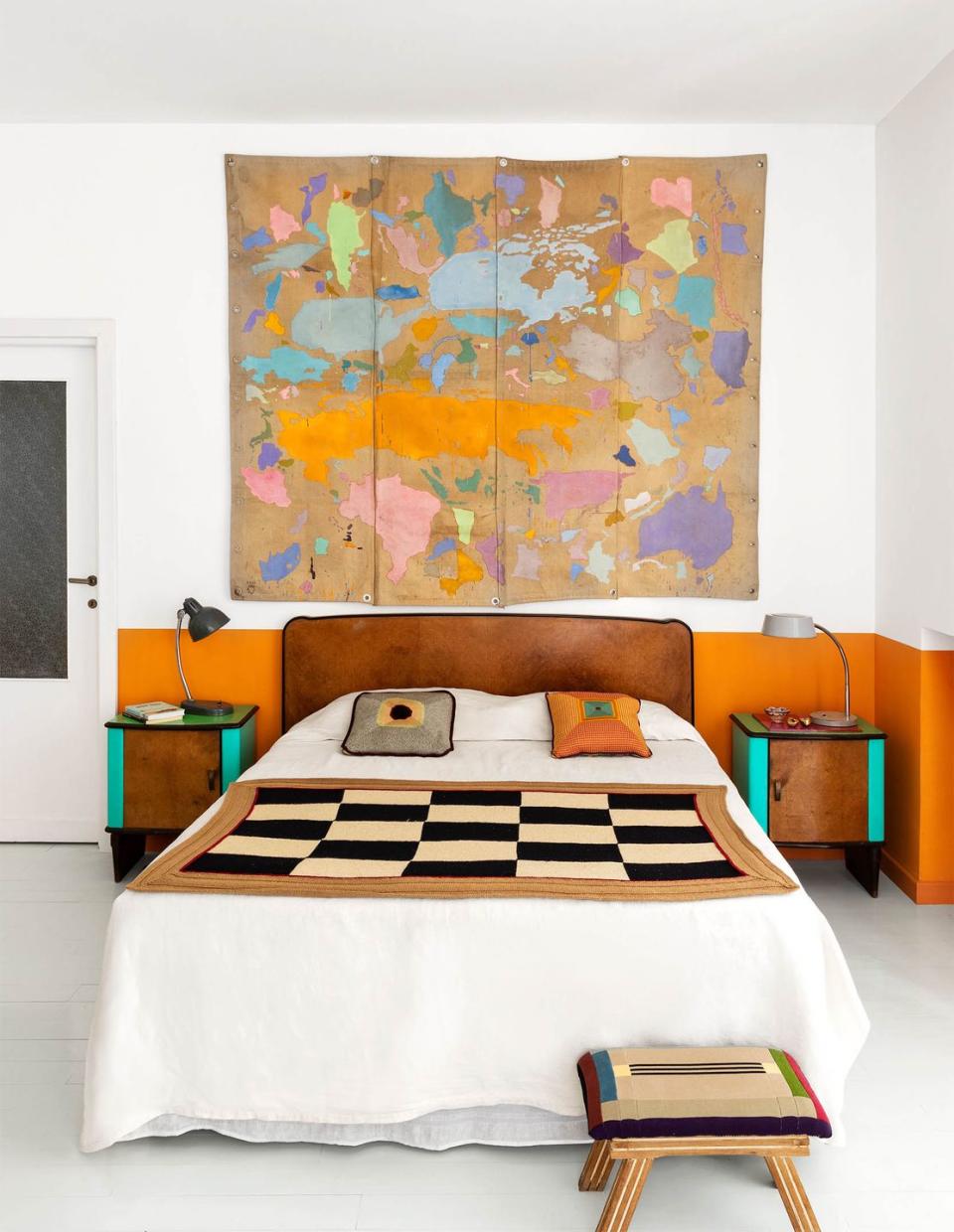
Her mother, Diane, and aunt Evelyne are the duo behind the Roman knitwear brand De Clercq & De Clercq. Polidoro is also close to her two talented half sisters: Zazie Gnecchi Ruscone, a designer of hand-painted textiles, and Livia Polidoro, a ceramist. Polidoro’s home is filled with her own artwork along with designs made by the women in her family, including her mother’s beautifully knitted bedcovers and cushions.
They, like her, love hues that energize and intrigue. Indeed, in her art studio down the road, Polidoro has painted the kitchen’s walls, floor to ceiling, with a lively multicolored geometric pattern. To spend time in her world is to enter a gateway where everything—as in her lush and compelling artworks—is suspended in a timeless dimension where color rules.
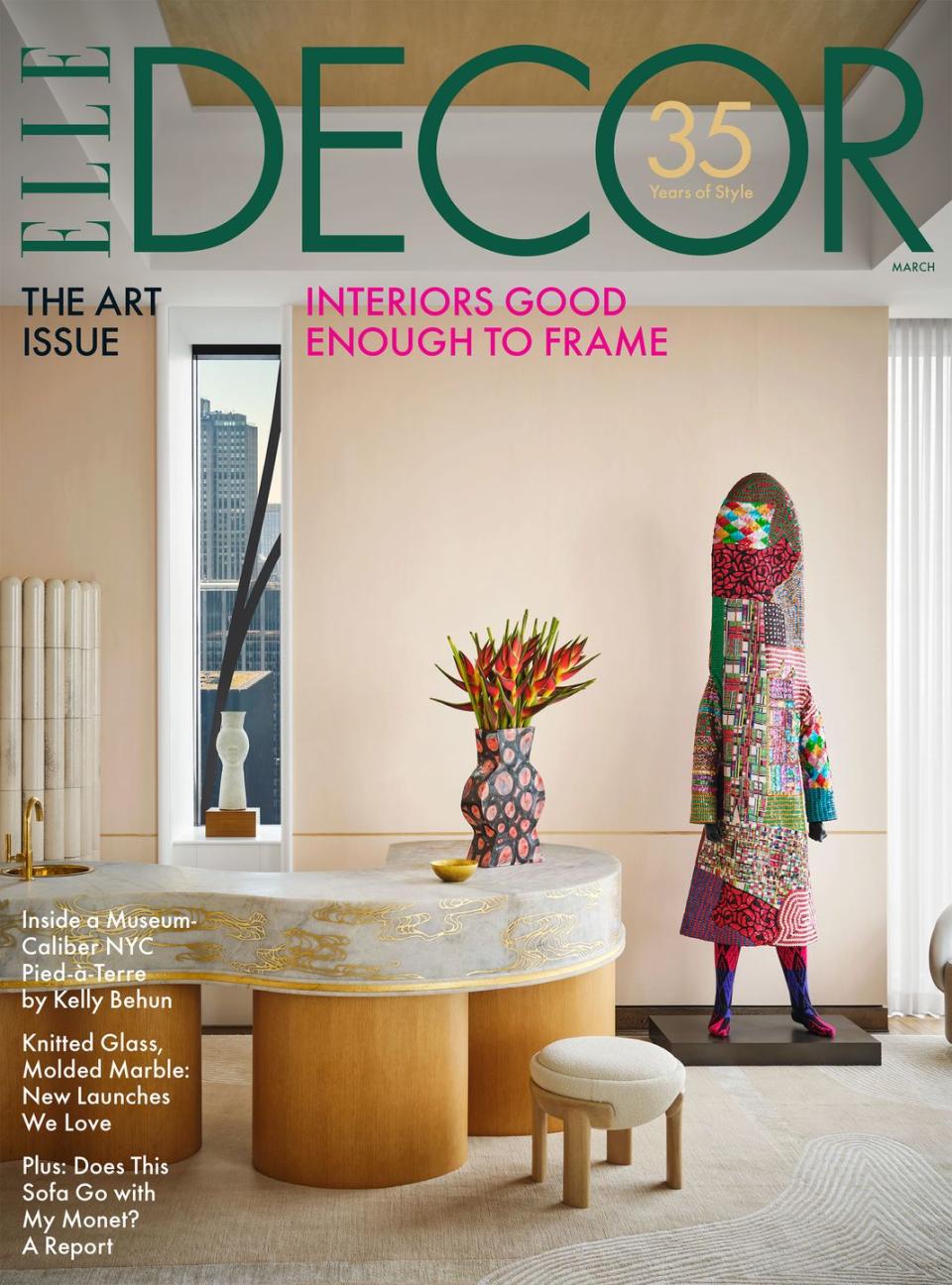
This story originally appeared in the March 2024 issue of ELLE DECOR. SUBSCRIBE
You Might Also Like

